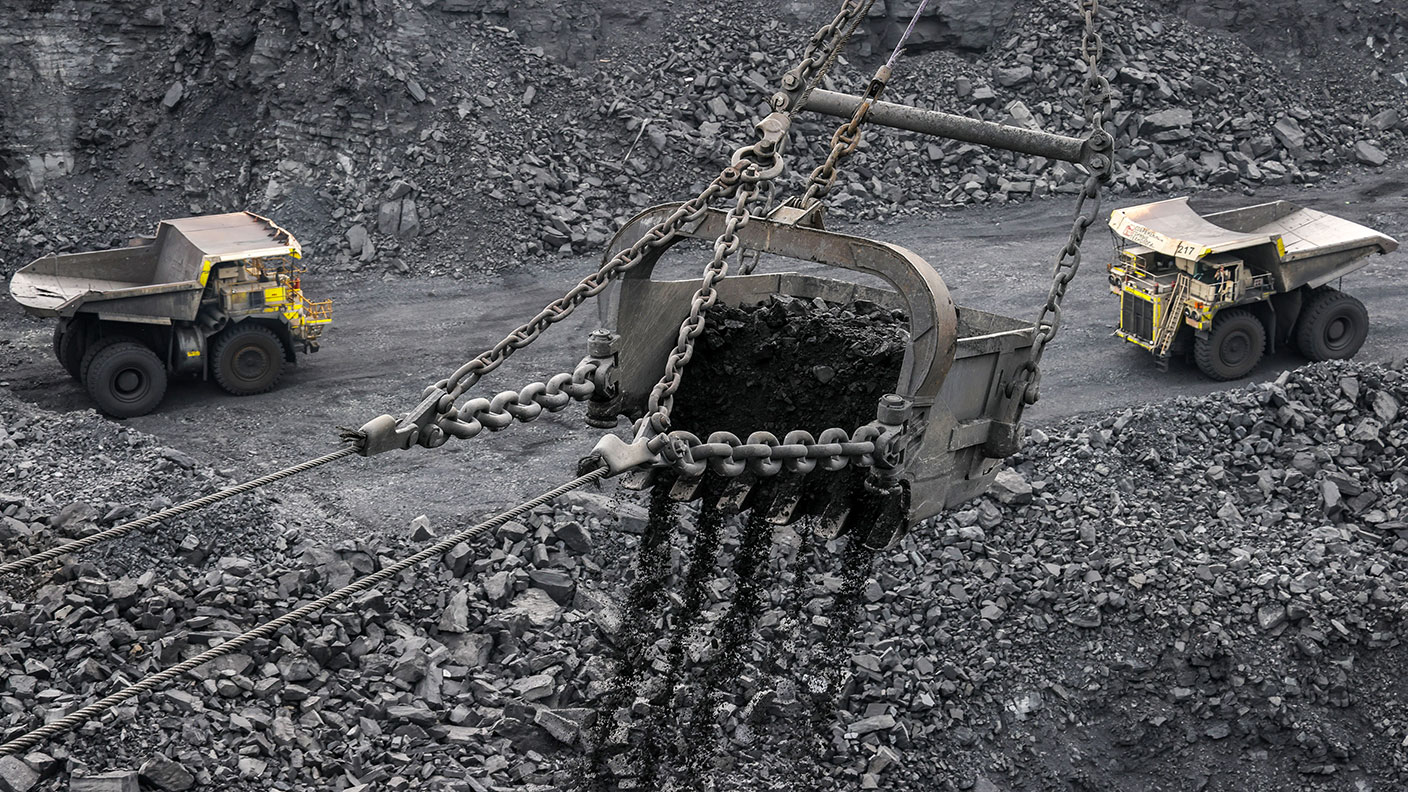Coal is far from dead. What should investors do about it?
Coal – the world’s dirtiest fuel – has been a pariah asset for a long time. But there's still plenty of demand for it. Saloni Sardana asks whether it's worth buying in.


Coal is the world’s dirtiest fuel – no one disagrees with that. As a result, it has been a pariah asset for a long time, even before the current mania for ESG (environmental, social and governance) took hold.
And yet, there’s a problem. Plenty of countries still depend on coal for a significant part of their energy mixes.
Governments in the West are doing what they can to phase out coal and move to greener forms of energy – with the UK one of the leaders on this front. But many Asian countries are struggling to shake their coal habits.
MoneyWeek
Subscribe to MoneyWeek today and get your first six magazine issues absolutely FREE

Sign up to Money Morning
Don't miss the latest investment and personal finances news, market analysis, plus money-saving tips with our free twice-daily newsletter
Don't miss the latest investment and personal finances news, market analysis, plus money-saving tips with our free twice-daily newsletter
Partly as a result of this, reports Neil Hume in the FT, “the world’s least-liked commodity” has ended up being “one of this year’s best-performing assets”.
So is now a good time to buy?
Coal might be dirty but there’s still plenty of demand for it
With widespread lockdowns in place for most of the pandemic, Covid-19 caused a slump in both coal demand and prices (similarly to everything else). Demand fell by around 5% last year, even after accounting for China’s quicker recovery from the pandemic in the second half of last year, according to the Paris-based International Energy Agency (IEA).
But now the IEA expects demand to grow by 1.8% in 2021. That is now being reflected in coal prices, which have surged this year. The price of high energy Australia coal – the Asian market benchmark – is up by more than 80%, says Hume.
Similarly to the bounce elsewhere in the commodity sector, a lot of this is down to the economic recovery theme and companies opening up and producing more. Coal stocks are also benefiting from a bounce in the wider energy sector, with natural gas prices bouncing too.
But it’s not just about rebounding demand, it’s partly about coal simply being detested.
Last month, Glencore’s outgoing chief executive, Ivan Glasenberg, secured a $588m deal that paved the way for the world’s biggest commodity trader to buy out the Cerrejon mine in Colombia, owned by BHP and Anglo-American.
Ten months ago, BHP unveiled plans to abandon thermal coal – the world’s dirtiest form of coal – as part of its ambitions to transition to a lower-carbon future.
Glasenberg’s parting shot demonstrates that coal is far from dead. We might not like it, but transitioning to renewable energy is easier said than done.
Plenty of countries have pledged to phase out coal in years to come, including the UK, France, Germany and Canada. Belgium completely eliminated coal in 2016, and the UK plans to phase coal out of its energy mix from October 2024, a little ahead of target.
Phasing out coal is all part of the aim to reduce greenhouse gas emissions.However, the problem is that lots of countries – in Asia particularly – still need it. Between them, India, China, Vietnam, Indonesia and Japan are planning to build more than 600 new coal-fired power generators – around 80% of the total planned globally, according to a report published last month by think tank Carbon Tracker.
What this means for investors
The endgame for coal might well be extinction. Most countries would prefer to use cleaner energy, but for now, renewables will struggle to meet demand: the IEA reckons that they will only meet “around half of the net demand increase in 2021 and 2022”. Coal also forms an essential part of the backbone of many countries’ power grids – when greener power is intermittent, coal kicks in to close the gap.
And with ongoing ESG pressure on producers, chances are that supply won’t respond as promptly to rising prices as perhaps it once would have.
So should you invest to take benefit of the current boom, or steer clear knowing the industry may cease to exist years down the line?
Catharina Hillenbrand Von Der Neyen, Carbon Tracker’s head of power and utilities, argues that: “investors should steer clear of new coal projects, many of which are likely to generate negative returns from the outset.”
This view is echoed by Tony Zabiegala, chief operating officer at Strategic Wealth Partners. “I wouldn’t touch coal stocks with a ten-foot pole now [or] in the future. With worldwide government regulation getting tighter and tighter, this presents major headwinds for coal companies,” he tells Forbes.
Yet it’s not hard to see why investors may be tempted to flock towards coal. Coal stocks have been on a tear since the start of the year. Shares in Peabody Energy, the world’s largest private coal firm, have practically quadrupled, while other coal miners, including Hallador Energy and CONSOL Energy, have risen substantially too.
Perhaps the best bet for those who want some exposure – but don’t want to put all their eggs in the coal basket – is to invest in Glencore (LSE: GLEN), which also gives exposure to the wider commodity sector.
Get the latest financial news, insights and expert analysis from our award-winning MoneyWeek team, to help you understand what really matters when it comes to your finances.
Saloni is a web writer for MoneyWeek focusing on personal finance and global financial markets. Her work has appeared in FTAdviser (part of the Financial Times), Business Insider and City A.M, among other publications. She holds a masters in international journalism from City, University of London.
Follow her on Twitter at @sardana_saloni
-
 RICS: Seller confidence hits new high but buyers are yet to return to the property market
RICS: Seller confidence hits new high but buyers are yet to return to the property marketThe latest Residential Market Survey from the Royal Institution of Chartered Surveyors (RICS) shows there are signs that confidence is slowly returning to the housing market
-
 'Lockdown wills’ at increased risk of legal challenge
'Lockdown wills’ at increased risk of legal challengePressures caused by the pandemic led some people to rush their wills. Now, lawyers are saying problems are surfacing that could make them invalid
-
 Halifax: House price slump continues as prices slide for the sixth consecutive month
Halifax: House price slump continues as prices slide for the sixth consecutive monthUK house prices fell again in September as buyers returned, but the slowdown was not as fast as anticipated, latest Halifax data shows. Where are house prices falling the most?
-
 Rents hit a record high - but is the opportunity for buy-to-let investors still strong?
Rents hit a record high - but is the opportunity for buy-to-let investors still strong?UK rent prices have hit a record high with the average hitting over £1,200 a month says Rightmove. Are there still opportunities in buy-to-let?
-
 Pension savers turn to gold investments
Pension savers turn to gold investmentsInvestors are racing to buy gold to protect their pensions from a stock market correction and high inflation, experts say
-
 Where to find the best returns from student accommodation
Where to find the best returns from student accommodationStudent accommodation can be a lucrative investment if you know where to look.
-
 The world’s best bargain stocks
The world’s best bargain stocksSearching for bargain stocks with Alec Cutler of the Orbis Global Balanced Fund, who tells Andrew Van Sickle which sectors are being overlooked.
-
 Revealed: the cheapest cities to own a home in Britain
Revealed: the cheapest cities to own a home in BritainNew research reveals the cheapest cities to own a home, taking account of mortgage payments, utility bills and council tax
-
 UK recession: How to protect your portfolio
UK recession: How to protect your portfolioAs the UK recession is confirmed, we look at ways to protect your wealth.
-
 Buy-to-let returns fall 59% amid higher mortgage rates
Buy-to-let returns fall 59% amid higher mortgage ratesBuy-to-let returns are slumping as the cost of borrowing spirals.
